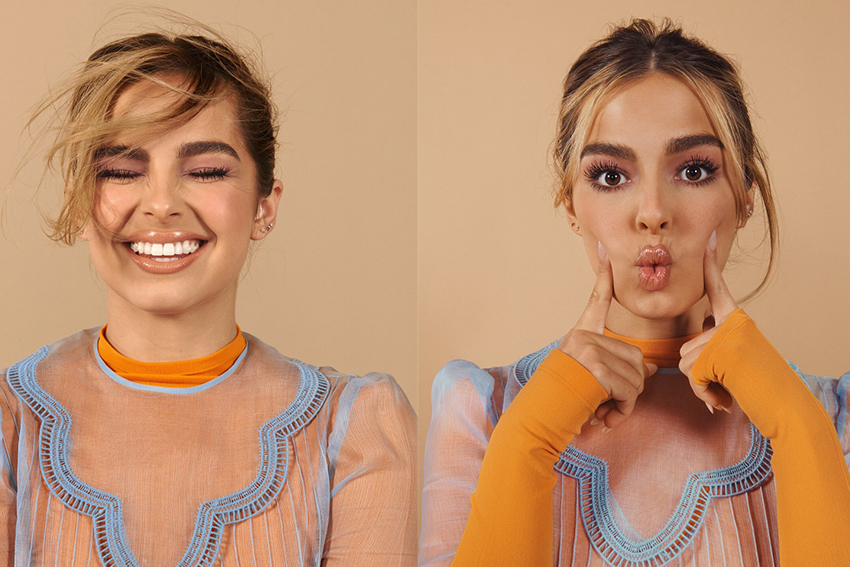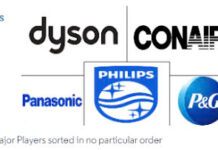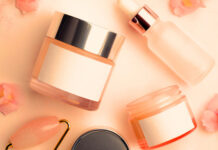How social media stars like Addison Rae gave the cosmetics industry a makeover.
SIGN UP FOR THE GREAT READ: Every weekday, we recommend one piece of exceptional writing from The Times — a narrative or essay that takes you someplace you might not expect to go.
A little over a year ago, Addison Rae Easterling rode down the boulevards of Beverly Hills in an Uber to meet with Marcelo Camberos, the chief executive officer of Ipsy, the largest beauty subscription service in the United States. Ipsy, named after an intensive pronoun in Latin, ipse, sells small “glam bags” of beauty companies’ products like, say, cheek highlighter in a shade of tiramisù. For $12 and up a month, the company mails those bags to millions of subscribers, many of whom listen to advice from Ipsy’s vast network of vloggers, influencers, and stylists. Now, in a new venture called Madeby Collective, the company hoped to manufacture and develop entirely new lines of makeup on its own. What Ipsy needed was a face to help them sell it.
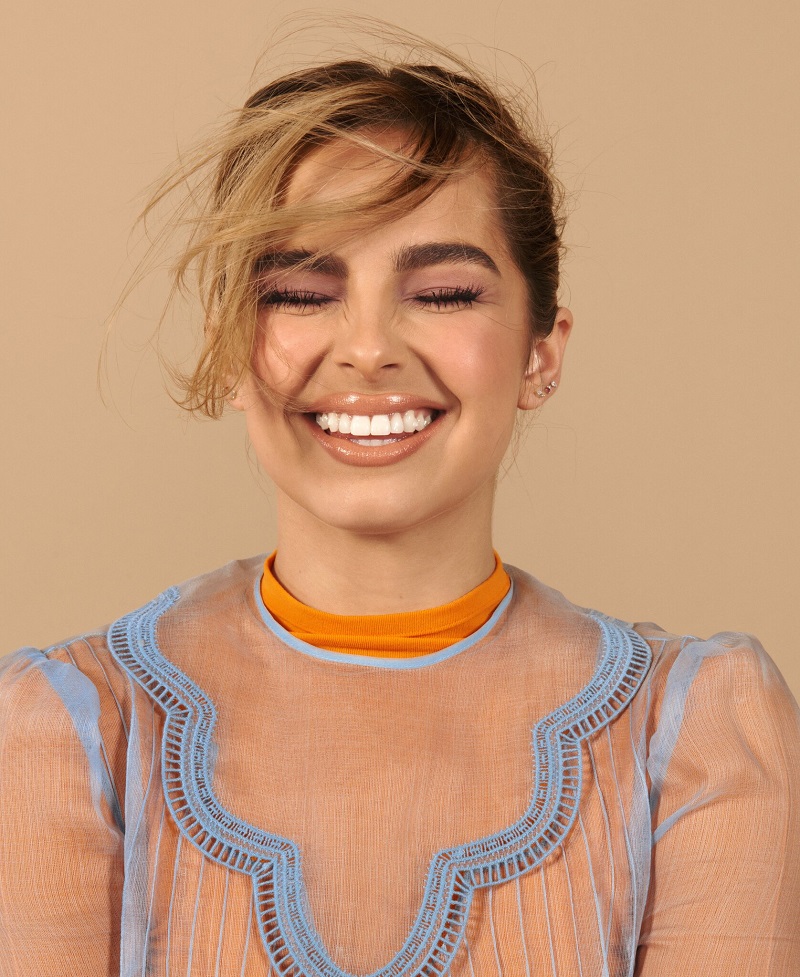
Easterling, 20, professionally known by only her first two names, seemed like an ideal candidate. In 2019, she was a college freshman dejected over not making the Louisiana State University pep squad and had been filming videos of herself doing slithery hip-hop dances that call to mind Max Headroom as a belly dancer. In a surreal turn of events appropriate for our times, cheerleader-ish girls dancing just this way to rap music was the height of entertainment during the pandemic, whether enjoyed genuinely or for laughs. Soon Easterling, or Rae, became the second-most-popular human being on TikTok, Gen-Z’s social media platform of choice. (The most popular, Charli D’Amelio, was also a slithery dancer, this time from Connecticut.) Rae estimated that she had about three million followers on TikTok when she met Camberos, but within a year she amassed 73 million — a population larger than that of the United Kingdom.
Now Rae found herself in a strange and modern predicament: She had become very famous and needed to get paid for it. Rae would start selling merch, making T-shirts with the phrase “I’m a Bad Bleep,” a reference to a viral song by Australian rapper The Kid Laroi (“I need a bad bitch/Addison Rae”), but continuing down that road, the typical influencer-hawking-vitamins-for-your-hair route, may have seemed too small. So Rae followed a new path, recently forged by many social media stars and A-list celebrities (two quantities that seem as if they will eventually merge) like Rihanna, Kim Kardashian, Kylie Jenner, Jennifer Lopez, Lady Gaga, and others who come to mind when you imagine a mistress of the universe beaming her wants and desires at Earth-like lasers. She wanted to start her own beauty brand.
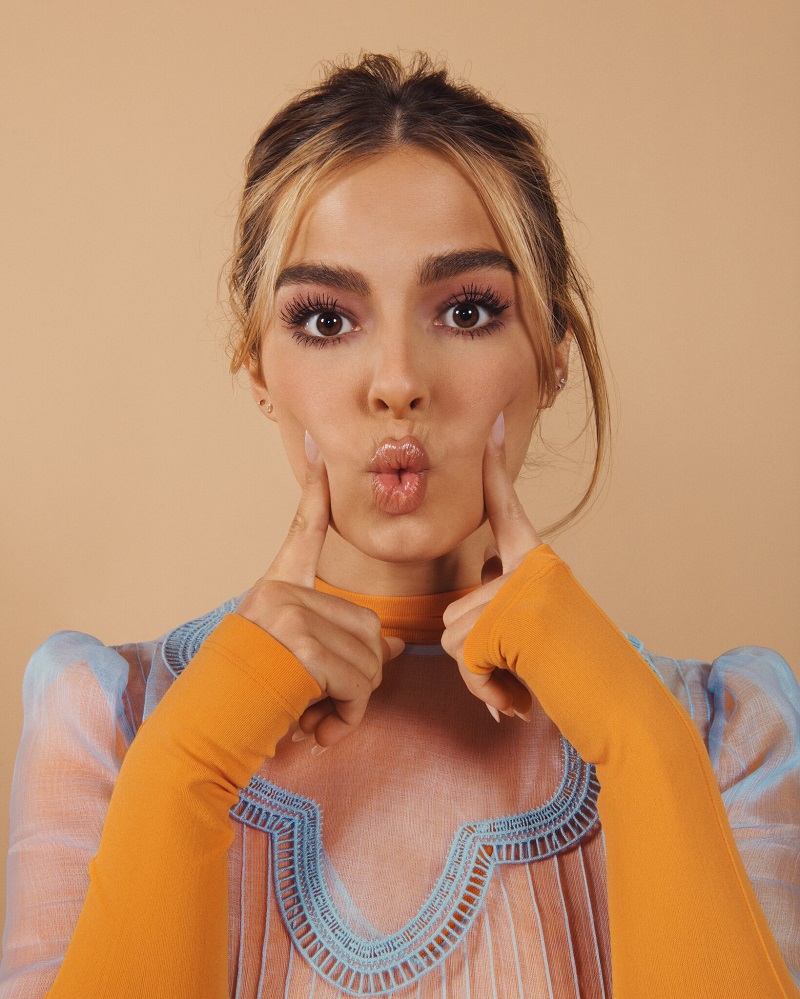
At her meeting in Beverly Hills, which took place at Rae’s agent’s office, Camberos pulled out some makeup testers he had brought along: lip gloss, rouge, powder. She turned them over in her palms, considered their colors. Afterward, Rae agreed not to the usual sponsored-content deal of posting thrilled accolades about the products on her social media feeds, nor the 1990s perfume deals in which celebrities branded fragrances with their own names, but rather to putting out her first makeup and skin-care line with Madeby Collective as a co-founder. They called the line Item Beauty, a reference to the way that two people who are in a state of romantic swoon are an “item,” which you would assume meant Rae herself, the icon, and a fan, who would seek to align herself with Rae. But when we spoke, she offered a different meaning. “Me and my makeup are a pair,” she told me. “We’re working together, and we’re together.” In other words, the commercial relationship was the primary one.
Rae’s deal with Ipsy was but a small part of a major shift in the beauty industry, which is nowhere more complex, and profitable, than the United States. People with clout, from celebrities to social media stars to lifestyle influencers, are changing the way they sell works, exploiting the intimate relationships they have with their fans in a way that wasn’t possible before in the industry. And while most of their profits aren’t close to comparable to established brands, at the moment, beauty is big business: Americans have long spent more in aggregate on beauty and personal care than any country in the world, about $92.8 billion in 2019, according to Euromonitor, a consumer research company. Though revenues dipped during quarantine, overall, global consumers have close to doubled their spending in the past 15 years, as prices of products have risen and beauty has entered a phase of total pop-culture domination, on par with hip-hop and gaming.
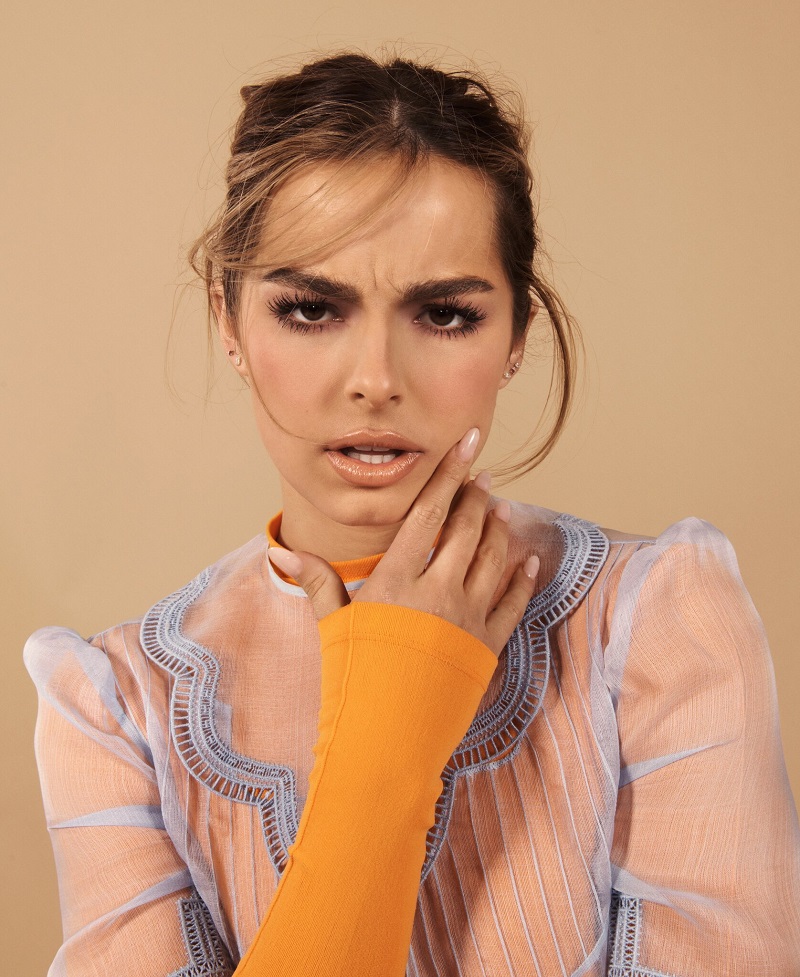
As with gaming, it’s the interactivity of the web, particularly YouTube (the fun of following along with tutorials about how to contour eyes to make them appear larger, for example) and Instagram (where you boastfully show off your face’s final look) that has made beauty’s pop-culture gambit such a success. TikTok, rapidly becoming a dominant force in media, was equally fertile ground. “Makeup does well in any type of video format where you see the transformation, a before and after,” says Michelle Lee, editor in chief of Allure. Trends bubble up on TikTok now, and then we’re talking about them in the real world, on TV, on websites. “When I was growing up, I would watch Nickelodeon and think, I need this slime, and now TikTok is taking that place, where kids look to see ‘What are these cool people doing, what are they wearing,’” Chloe Hall, the digital beauty director of Elle, says. “Some of the best beauty personalities on TikTok right now are 14-year-olds in their basement. It’s wild.”
As beauty has become a pop phenomenon, a radical change in the perception of the cosmetics business has also taken place. When Naomi Wolf wrote “The Beauty Myth” more than three decades ago, she chastened the industry for pushing an unrealistic standard of beauty that prevented women from reaching their full potential, much as ideals of domesticity, motherhood and chastity once did. She compared the process of making yourself conventionally attractive to a work shift, or the “third shift” (the other shifts being your professional life and care of the household). But in our new virtual society, the same beauty industry that was once maligned has been embraced as a universal good. Beauty companies are lauded for providing us with tools of self-expression and celebrating the human desire to adorn the face using something other than the tricks of social media (filters, lighting, Facetune). And many individuals and companies within the industry have capitalized on this impression. Applying cosmetics is a worthy lifestyle choice characterized as self-love, self-care and wellness — all positive, healthful qualities, even if you have the sneaking suspicion that “wellness” is mostly a coded word for the pursuit of being skinny and pretty, or tamping down anxiety about not being skinny and pretty.
Though I am the type of person who spends as much time trying to avoid myself in the mirror as I do looking in it, I should admit that before hopping on a video call with Rae this fall, I spent quite a bit of time prepping my own face. I’ve worn makeup nearly every time I’ve appeared in public since about her age, though my regimen was never terribly time-consuming. You could have reasonably expected that Covid-era sequestration would dampen the attention that we pay to our looks, but Zoom meetings, FaceTime family chats and awkward video cocktail hours have brought many of us closer to the sight of our own faces, and I’ve found myself confronted by pores and blemishes that I would have preferred weren’t viewed by others in high definition. We seem to be among the first people in history to be both in the midst of a global pandemic and also obliged to project an attractive image of ourselves to the outside world.
On the day of our call, smoke from nearby fires in Los Angeles, where Rae lives, was obscuring the blue sky. Despite the environmental chaos taking place outside her window, Rae, who was sitting in a bedroom with blindingly white walls at her parents’ house, was poised and spunky. She wiggled a little in her seat, just enough for me to spy a neatly made bed behind her decorated with a pillow that read Team Addison. Despite the cumbersome technology, her deep brown, saucer-size eyes seemed to draw me right into her soul, a prerequisite for success when trying to make it in the transactional world of beauty, where such intimacy is the currency of the day.
Rae’s voice was soft and breathy. Her gold hoop earrings bounced a little as she gestured with her hands. It’s very 21st century to dream of coming to Hollywood and making it as a beauty mogul. Did Rae always imagine this? “Yeah,” she said. “I feel like for every girl, it’s a dream.”
Until the late 19th century, according to Geoffrey Jones’s 2010 book, “Beauty Imagined,” the beauty business was a mostly local enterprise where pamphleteers sold advice and pots of rouge. But then factories began spitting out tubes of lipstick en masse, and the availability of portrait photography became widespread, which inspired some to change their appearance. Some beauty brands that began in the 1920s are still around in some form, often under the names adopted by their eccentric founders. Many didn’t use their birth names or real stories. Estée Lauder was born Josephine Esther Mentzer in Corona, Queens. Helena Rubinstein was born Chaja Rubinstein in Poland in 1872; after refusing an arranged marriage, she emigrated to Australia and began selling a cream that she claimed had been formulated from herbs in the Carpathian Mountains. Max Factor was born Maksymilian Faktorowicz in Lodz, then part of Russia, and became the cosmetician for the Imperial Russian Grand Opera before leaving for America. Elizabeth Arden, born Florence Nightingale Graham outside Toronto, opened salons across the world; married a man who had a doubtful royal title; and famously had her horses’ legs rubbed down with her Eight Hour Cream.
For about a hundred years, some of the companies started by these founders earned many millions. Legacy brands are doing well globally, especially in China, where people are now addicted to American beauty brands. According to the NPD Group, a market-research company, sales volume in China of prestige beauty products, a category that includes brands like MAC and Nars, now exceeds that in the U.S. But this entrenched structure of large corporations is now far from the only way to create beauty products. And those who have worked in big beauty for decades are trying their hand at independence. (Bobbi Brown, the face of corporate beauty takeovers when Estée Lauder bought her brand in the 1990s, said that she wore a necklace bearing the date that her noncompete clause expired before beginning a beauty line of her own, Jones Road.) “Some big brands aren’t innovating and they aren’t growing,” says Linda Bolton Weiser, an industry analyst at D.A. Davidson. “Have you looked at CoverGirl packaging recently? It looks like it’s from the 1970s.”
As the business becomes atomized and we spend more time at home scrolling skin-care ads on Instagram, the role of retail has a murkier future. Brands have traditionally drawn business from customers browsing in actual stores. If you’ve ever been to a Sephora on a pre-pandemic Friday night, you know it can be a party in there, with 9-to-5-ers blowing off steam by sticking their fingers in fomites of lip-gloss jars, then hitting happy hour nearby. The bulk of sales, pre-Covid, was still coming from retail. But in 2020, according to the NPD Group, prestige beauty brands declined 19 percent, while direct retailers of consumer cosmetics fell only 4 percent. “What Covid did, in my view, is speed up the whole process by three to five years of retailers that were frail and now are collapsing,” Jeffrey Ten, a beauty-brand consultant, said. The beneficiaries, he said, were e-commerce companies, big-box retailers and Amazon.
A skin care routine seemed to be a genuine act of empowerment, a radical way of reclaiming the right to take time for yourself.
In many ways, the business today resembles the original beauty business of a century ago, when showy salespeople with innovations — or at least what they claimed were innovations — dominated. “Fashion’s always been where the romance is and where the glamour is,” says Sarah Brown, a brand adviser and a former beauty director of Vogue. “But now for people who want to be stars, who want to be C.E.O.s, who want to be wealthy, start a business, sell a business — they want to be in beauty.” (There may currently be too many of these people. Lee, of Allure, told me that she regarded the current proliferation of entrepreneurs as a bubble.)
The primary innovations, now, are less technological than cultural. And many of these changes are far overdue. The beauty industry has long exhibited devotion in its advertisements to what was once seen as the blond, blue-eyed American ideal, with the occasional woman of color thrown in (Eva Longoria). Fracturing this hegemony required someone extraordinary from outside the system to exert pressure on gatekeepers, and by that I mean Rihanna.
In 2017, when Rihanna and LVMH started the makeup line Fenty (Rihanna’s surname), she pushed the concept of creating foundations that actually matched the color of your skin. This was something beauty conglomerates had the practical capacity to do for decades but often didn’t, choosing instead to make women like me, with dark olive skin, paint from the same palette as Caucasians from Northern Europe. And if you were Black? Conglomerates did not make a line expressly for Black women until 2006, when CoverGirl introduced Queen, with Queen Latifah. “‘You could walk into a drugstore and get products that were quote-unquote tailored for you,” says Amanda Johnson, co-founder of Mented, an indie lipstick brand that focuses on women of color. “But without proper focus and investment, you ended up with products that were somewhat subpar.”
Today many companies are celebrating the true spectrum of American skin tones, and many new beauty stars don’t have a traditional blonde, blue-eyed look. Those who don’t hew to the former ideal are increasingly highlighted, like Pat McGrath, the 51-year-old British Black makeup star who developed Giorgio Armani’s beauty line in the 1990s before introducing her own, Pat McGrath Labs. (This year, she became the first makeup artist to be appointed a dame of the British Empire.) We are being fed different images in advertisements than we were only a few years ago: We see some plus-size models, trans models and a supermodel with vitiligo, Winnie Harlow. Ipsy has even incorporated this change into its nomenclature; after I interviewed Rae, it acquired another company and formed a larger entity, BFA Industries, short for Beauty for All.
Consumers have been behind some of these changes; when they don’t see their identities included in brands, they demand representation or will spend their money elsewhere. Powerful voices, too, are trying to maintain momentum toward more diversity. “I’m fearful it’s a trend, or a moment, and so I think we need to hold their feet to the fire and make sure we change the composition of the executive boards,” Hall, Elle’s digital beauty director, says.
Though a majority of influencers paid to represent brands these days resemble Rae — and tend to command higher fees than their Black counterparts, according to Bloomberg Businessweek — their primary occupation is speaking a fan’s language and drawing them close, becoming both friends and muse. They are the beauty industry’s de facto mouthpieces now. They, too, speak the language of wellness and seem to share the same elevated morals (or the elevated morals we project on them). The relationship a celebrity can have with a fan is far more elaborate than the one between a brand and a customer, even though, at its core, those relationships are the same.
Source:https://www.nytimes.com/2021/03/23/magazine/addison-rae-beauty-industry.html

